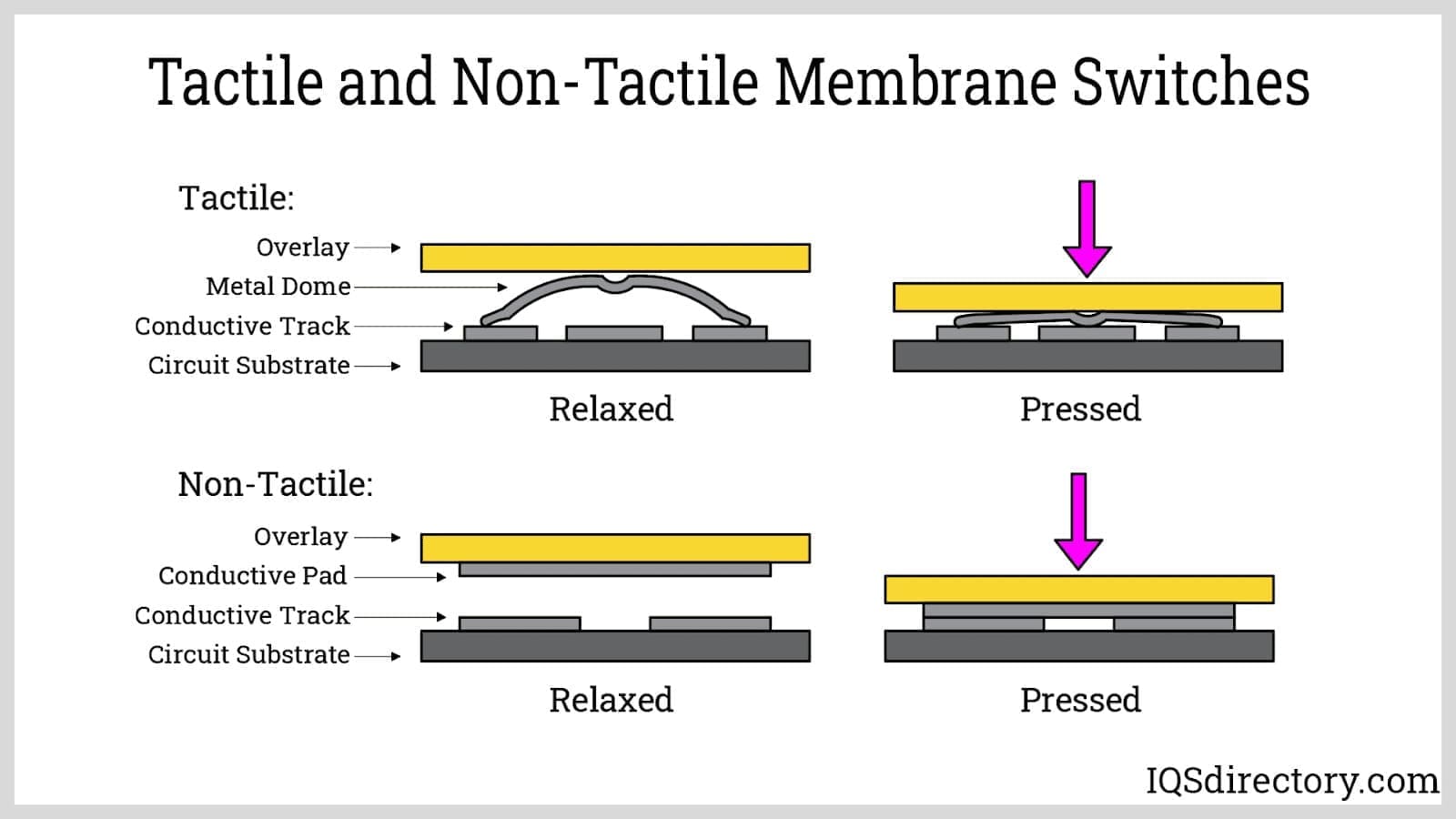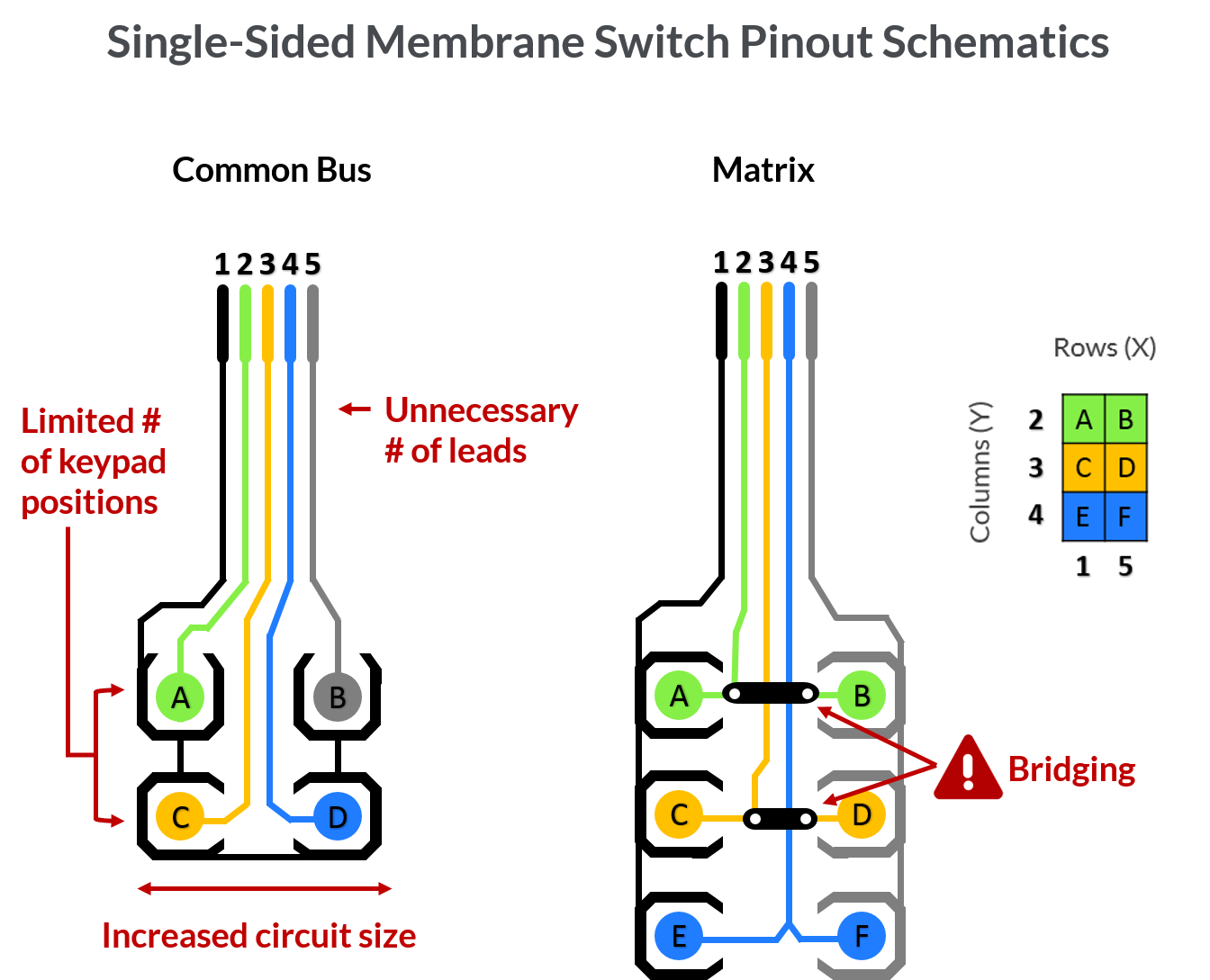The Production Process Behind Membrane Layer Change: What You Need to Know
The production process behind membrane layer switches combines cautious design, product selection, and top quality control. It begins with recognizing the complexities of membrane layer switch style and progresses with numerous stages, consisting of material options and printing strategies. Each phase plays an important duty in guaranteeing capability and resilience. The complexities of layer building and construction and the rigorous testing requirements might disclose insights that are not right away noticeable. What exists beyond these foundational aspects?
Recognizing Membrane Layer Switch Design
Although membrane layer buttons might show up simple in the beginning glimpse, their layout involves intricate factors to consider that assure functionality and sturdiness. The style process begins with a complete understanding of customer needs, consisting of the user interface's designated application and environmental elements. Functional designs is a crucial aspect, as the design should assist in simplicity of use while guaranteeing that tactile feedback fulfills customer expectations.Moreover, the layering of elements, such as graphic overlays, adhesive layers, and conductive traces, must be precisely crafted. membrane switch. This split setup not only affects the button's responsiveness however also influences its longevity. Attention is offered to the sealing methods utilized to secure against moisture and dirt, which can jeopardize performance. In addition, layout considerations extend to visual appeals, where color design and visual clarity boost individual experience. Ultimately, the layout of membrane switches over equilibriums functionality, customer experience, and toughness, guaranteeing that they meet the needs of various applications properly
Materials Used in Membrane Layer Switch Production
When selecting products for membrane button manufacturing, it is essential to consider both performance and toughness. The primary products consist of polyester and polycarbonate films, which give versatility and toughness. These films are usually coated with glue to guarantee appropriate bonding to substratums. Conductive inks, usually made up of silver or carbon, are crucial for developing electrical connections within the button, enabling trustworthy operation.Additionally, a safety layer, such as a hard layer, is regularly put on improve scrape resistance and longevity. The choice of backing product, such as acrylic or foam, can substantially impact the switch's responsive feeling and overall customer experience. Moreover, different ecological factors, including temperature level and moisture, need to guide material choice to assure peak efficiency in specific applications. Inevitably, the appropriate mix of materials adds to the membrane switch's functionality and lifespan, making informed options vital for makers.
The Printing Refine: Creating Video and Text
The printing procedure in membrane layer switch manufacturing plays a considerable function in creating premium graphics and text. Different graphic design techniques are used to assure aesthetic allure and capability, while mindful ink choice techniques are necessary for toughness and efficiency. Comprehending these elements is fundamental for attaining ideal cause membrane switch layout.
Graphic Design Techniques
Graphic layout methods play a vital role in the printing procedure of membrane buttons, as they define how graphics and message will ultimately show up on the end product. Efficient visuals style involves the critical use formats, colors, and typefaces to boost readability and visual charm. Developers typically utilize vector graphics for scalability, making sure that photos stay sharp at numerous sizes. Furthermore, attention to comparison and alignment is crucial, as it affects individual communication and aesthetic high quality. The incorporation of branding aspects, such as logo designs, must be managed with like preserve brand name integrity. In general, thoughtful visuals layout techniques add substantially to the functionality and beauty of membrane layer buttons, influencing user experience and product efficiency.
Ink Selection Techniques
Choosing the ideal ink is important for accomplishing the preferred aesthetic top quality and durability in membrane switch production. Different ink kinds are made use of, consisting of solvent-based, water-based, and UV-curable inks. Each kind offers distinct qualities, such as adaptability, attachment, and resistance to ecological variables. Solvent-based inks are often preferred for their durability and vibrant shades, while water-based inks are more eco pleasant yet might have restrictions in bond. UV-curable inks offer rapid curing and robust efficiency. In addition, shade matching methods guarantee that the selected inks straighten with layout specs. Inevitably, the selection of ink need to think about elements such as application method, substratum compatibility, and end-use needs to accomplish exceptional lead to membrane layer switch graphics and text.
Layer Building And Construction and Setting Up

Material Choice Refine
A mindful option of products is crucial in the manufacturing process of membrane buttons, as it straight affects capability and durability. The primary materials used include polyester, polycarbonate, and various conductive inks. Polyester is frequently favored for its excellent resistance to chemicals and abrasion, making it suitable for harsh environments. Polycarbonate, on the other hand, provides superior quality and influence resistance, which is valuable for applications calling for presence and toughness. Conductive inks, normally composed of silver or carbon, are important for creating reliable electric paths. Furthermore, the option of adhesive products influences the general integrity of the button - membrane switch. Reviewing aspects such as environmental exposure, responsive comments, and aesthetic needs overviews producers in selecting the ideal products for their particular applications
Layer Attachment Strategies
Adhering layers in membrane button building is an important procedure that ensures functionality and long life. Different adhesion methods are utilized to secure perfect bonding in between layers, which normally include the usage of adhesives, warm, and stress. Pressure-sensitive adhesives (PSAs) are frequently utilized for their simplicity of application and immediate bonding capacities. Additionally, thermal bonding strategies can be applied, where warm is used to trigger adhesive properties, protecting a solid bond. The option of attachment method mainly depends on the products entailed and the particular application needs of the membrane switch. Correct alignment and uniform application of adhesives are essential to avoid issues, securing the switch runs effectively throughout its designated life-span.
Quality Assurance Steps
Assuring quality control during the layer building and setting up of membrane layer switches is vital for check it out keeping efficiency and reliability. This procedure typically includes a number of vital procedures, including extensive assessments at each phase of production. Manufacturers make use of sophisticated screening techniques, such as peel tests and attachment evaluations, to validate the honesty of layer bonds. Additionally, visual examinations are performed to determine any type of problems in printing or product incongruities. Ecological check this site out problems, such as temperature and moisture, are carefully checked to ensure optimal treating and attachment. Additionally, normal calibration of tools assists keep precise production standards. By implementing these quality control measures, suppliers can substantially lower the danger of product failure, assuring that the last membrane switches fulfill the needed specifications and customer assumptions.
Evaluating and Quality Assurance Measures

Innovations in Membrane Layer Change Technology
As innovations in innovation remain to advance, membrane layer switches are taking advantage of innovative growths that improve their functionality and customer experience. One noteworthy innovation is the combination of capacitive touch technology, which permits for more user-friendly and receptive individual interfaces. This shift not just improves aesthetics however additionally minimizes mechanical wear and tear, expanding the life expectancy of the switches.Additionally, innovations in visuals overlay products have brought about boosted sturdiness and resistance to environmental factors such as dampness and UV light. These materials now offer boosted clarity and illumination, more elevating the aesthetic appeal.Furthermore, the unification of smart modern technology is transforming membrane switches over right into interactive control panels, allowing connection with IoT tools. This connectivity promotes a smooth customer experience, leading the way for applications in various industries, from health care to customer electronic devices. Collectively, these developments setting membrane layer switches over as crucial elements in contemporary tool design.
Frequently Asked Concerns
Exactly how Lengthy Does the Membrane Layer Switch Over Production Process Take?
The duration of the membrane switch manufacturing process can vary significantly. Aspects such as intricacy, products made use of, and manufacturing quantity impact timelines, with regular manufacturing varying from a couple of days to numerous weeks for conclusion.
What Are the Usual Applications for Membrane Layer Buttons?
Membrane layer buttons are frequently made use of in numerous markets, consisting of vehicle controls, family home appliances, medical devices, and consumer electronics (membrane switch). Their adaptability and toughness make them you can try here suitable for applications calling for easy to use interfaces and reputable performance in diverse settings
Can Membrane Layer Changes Be Personalized for Particular Requirements?

What Is the Life expectancy of a Normal Membrane Layer Switch?
The life expectancy of a normal membrane layer button differs, yet generally, it ranges from 1 to 5 million cycles. Factors such as usage, setting, and worldly top quality greatly influence resilience and overall performance in time.

Are Membrane Layer Switches Over Eco-friendly?
The environmental friendliness of membrane layer switches over differs. Some products utilized may not be recyclable, while others can be environmentally friendly. The overall influence relies on producing methods and materials, requiring careful factor to consider throughout selection and disposal. The production procedure behind membrane switches combines mindful style, material option, and high quality control. It begins with understanding the details of membrane switch style and proceeds with various phases, including product options and printing techniques. When picking materials for membrane layer switch production, it is necessary to consider both efficiency and toughness. A careful choice of materials is necessary in the manufacturing procedure of membrane buttons, as it directly affects functionality and longevity. The option of attachment technique greatly depends on the materials entailed and the specific application needs of the membrane switch.